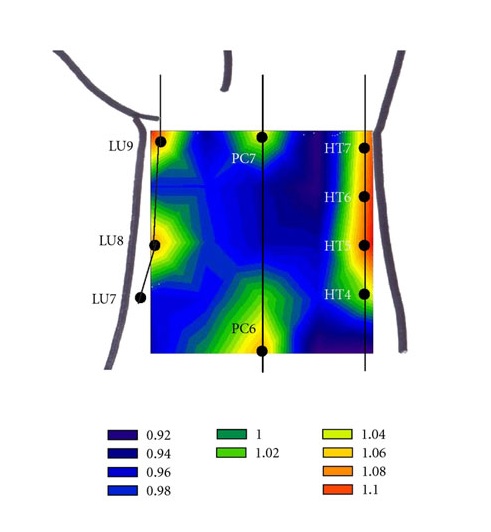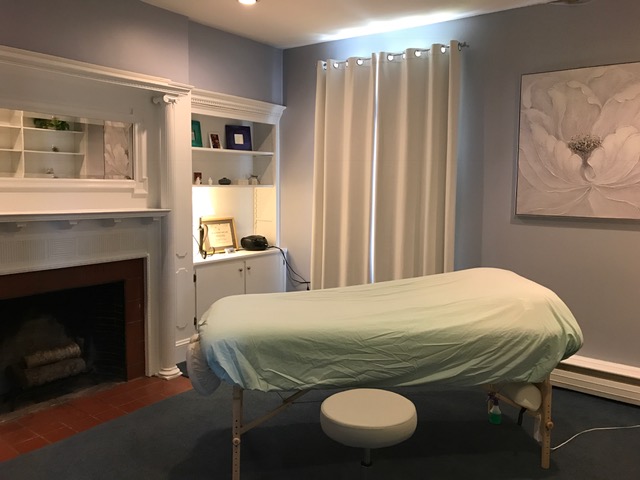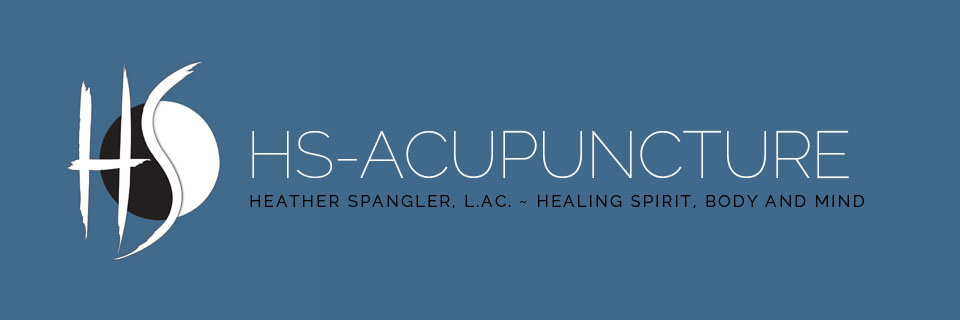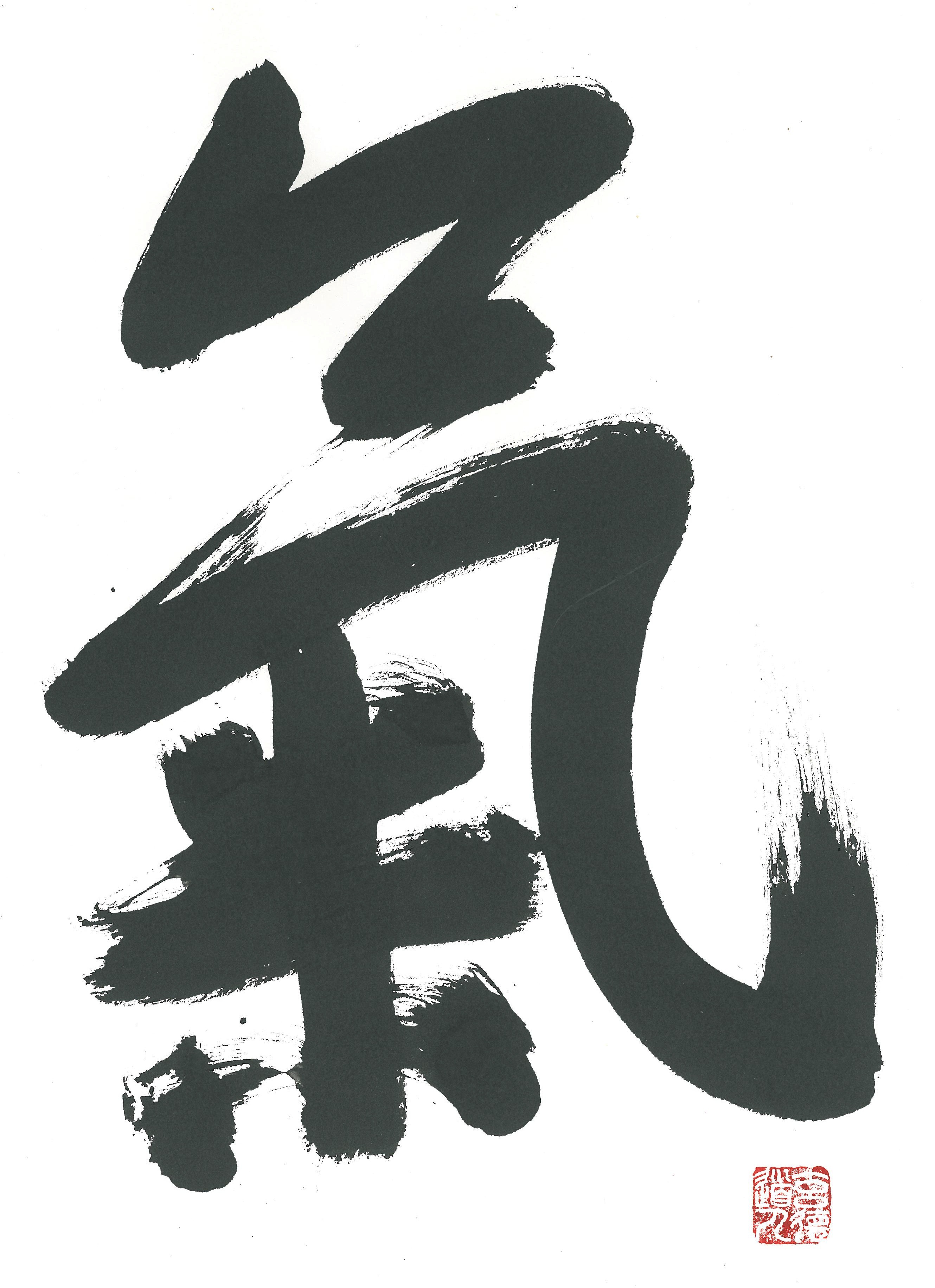 Journal of Electron Spectroscopy and Related Phenomena. Click here for the article & sources.
Journal of Electron Spectroscopy and Related Phenomena. Click here for the article & sources.
For those of you who have personally benefitted from an acupuncture treatment, confirmation that acupuncture points exist may not surprise you.
However, I always think it is interesting when modern technology enables us to visualize, or even better understand, that which we may already know, at least from the level of our own experience.
In the article, which featured this image and others like it, modern technologies such as MRI (magnetic resonance imaging), infrared imaging, LCD (liquid crystal display) thermal photography, ultrasound and other CT (computerized tomography) imaging methods were used to provide visual representations of acupuncture points on the body.
The acupuncture points in the image above, in such pleasingly vivid color, features the area on the inside of the wrist and includes points along the Lung, Pericardium and Heart meridians.
The theory is that acupuncture points lie along various trajectories that run usually longitudinally through the body. Stimulation of these points with a needle, or with moxabustion, or even an essential oil, serves to benefit not only the organ to which the meridian refers, but also the various bodily functions as well.
Much can be said about how and when to use the various acupuncture points. There are well over 400 points on the body and head, even the ears, each one with its own specific indications.
Some of the functions of the points in this image include the regulation of the heart beat, eliminating night sweats (especially in combination with another point along the Kidney meridian on the lower leg), improving lung function, alleviating insomnia, treating anxiety and subduing nausea.
While this research is in itself interesting, the true value of a study such as this one may lie somewhere within the intersection of these ancient and modern perspectives.
Science, as one of the leading languages of our current culture, seeks to elucidate mystery. As the ancient tradition of Chinese medicine has been, and continues to be, translated into English, so, too, can it be interpreted within scientific terms. Perhaps science can shed light into the mystery of how acupuncture works.
THAT acupuncture works is already accepted. The World Health Organization lists many conditions, for which it considers acupuncture to be effective treatment, including the following:
1. Diseases, symptoms or conditions for which acupuncture has been proved-through controlled trials-to be an effective treatment:
Adverse reactions to radiotherapy and/or chemotherapy
Allergic rhinitis (including hay fever)
Biliary colic
Depression (including depressive neurosis and depression following stroke)
Dysentery, acute bacillary
Dysmenorrhoea, primary
Epigastralgia, acute (in peptic ulcer, acute and chronic gastritis, and gastrospasm)
Facial pain (including craniomandibular disorders)
Headache
Hypertension, essential
Hypotension, primary
Induction of labour
Knee pain
Leukopenia
Low back pain
Malposition of fetus, correction of
Morning sickness
Nausea and vomiting
Neck pain
Pain in dentistry (including dental pain and temporomandibular dysfunction)
Periarthritis of shoulder
Postoperative pain
Renal colic
Rheumatoid arthritis
Sciatica
Sprain
Stroke
Tennis elbow
2. Diseases, symptoms or conditions for which the therapeutic effect of acupuncture has been shown but for which further proof is needed:
Abdominal pain (in acute gastroenteritis or due to gastrointestinal spasm)
Acne vulgaris
Alcohol dependence and detoxification
Bell’s palsy
Bronchial asthma
Cancer pain
Cardiac neurosis
Cholecystitis, chronic, with acute exacerbation
Cholelithiasis
Competition stress syndrome
Craniocerebral injury, closed
Diabetes mellitus, non-insulin-dependent
Earache
Epidemic haemorrhagic fever
Epistaxis, simple (without generalized or local disease)
Eye pain due to subconjunctival injection
Female infertility
Facial spasm
Female urethral syndrome
Fibromyalgia and fasciitis
Gastrokinetic disturbance
Gouty arthritis
Hepatitis B virus carrier status
Herpes zoster (human (alpha) herpesvirus 3)
Hyperlipaemia
Hypo-ovarianism
Insomnia
Labour pain
Lactation, deficiency
Male sexual dysfunction, non-organic
Ménière disease
Neuralgia, post-herpetic
Neurodermatitis
Obesity
Opium, cocaine and heroin dependence
Osteoarthritis
Pain due to endoscopic examination
Pain in thromboangiitis obliterans
Polycystic ovary syndrome (Stein-Leventhal syndrome)
Postextubation in children
Postoperative convalescence
Premenstrual syndrome
Prostatitis, chronic
Pruritus
Radicular and pseudoradicular pain syndrome
Raynaud syndrome, primary
Recurrent lower urinary-tract infection
Reflex sympathetic dystrophy
Retention of urine, traumatic
Schizophrenia
Sialism, drug-induced
Sjögren syndrome
Sore throat (including tonsillitis)
Spine pain, acute
Stiff neck
Temporomandibular joint dysfunction
Tietze syndrome
Tobacco dependence
Tourette syndrome
Ulcerative colitis, chronic
Urolithiasis
Vascular dementia
Whooping cough (pertussis)
Is there a condition on this list, for which you would like to try acupuncture?
 *We have moved. Stay tuned for new location -- 773 Congress Street*
*We have moved. Stay tuned for new location -- 773 Congress Street*
 Acupuncture,
Acupuncture,  Health,
Health,  New office,
New office,  Special,
Special,  You | in
You | in  Acupuncture,
Acupuncture,  Portland
Portland 





